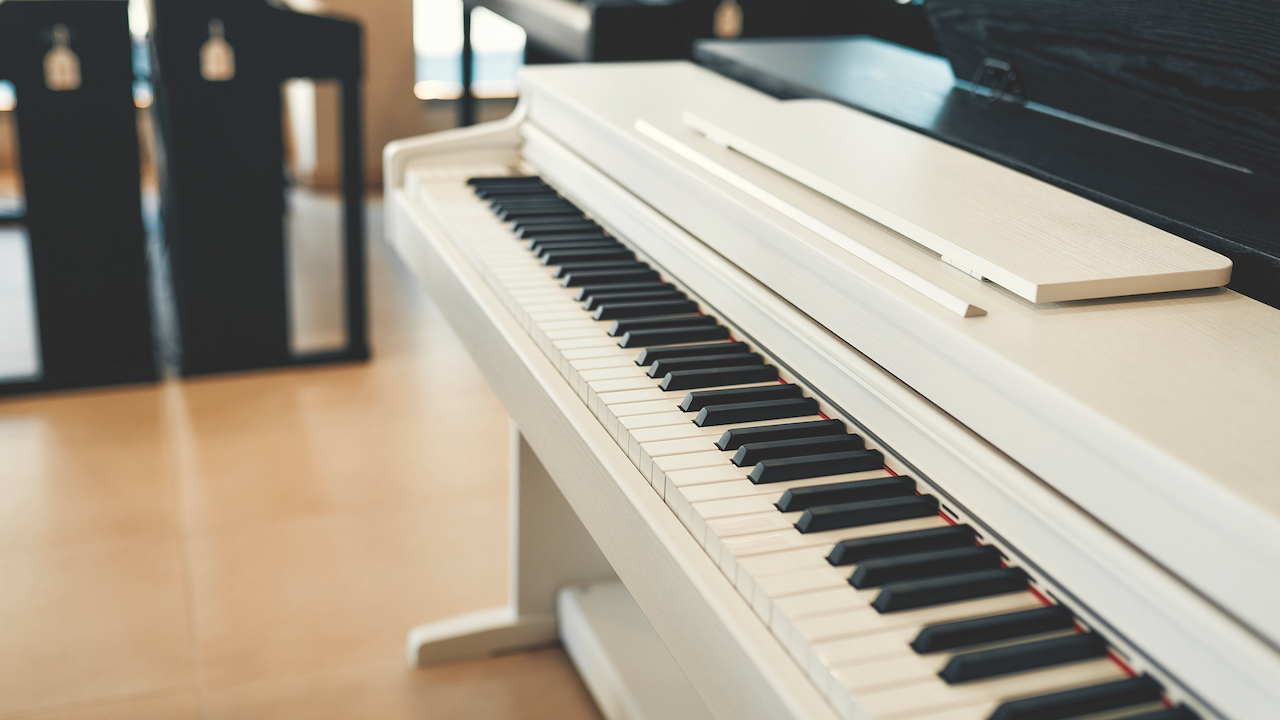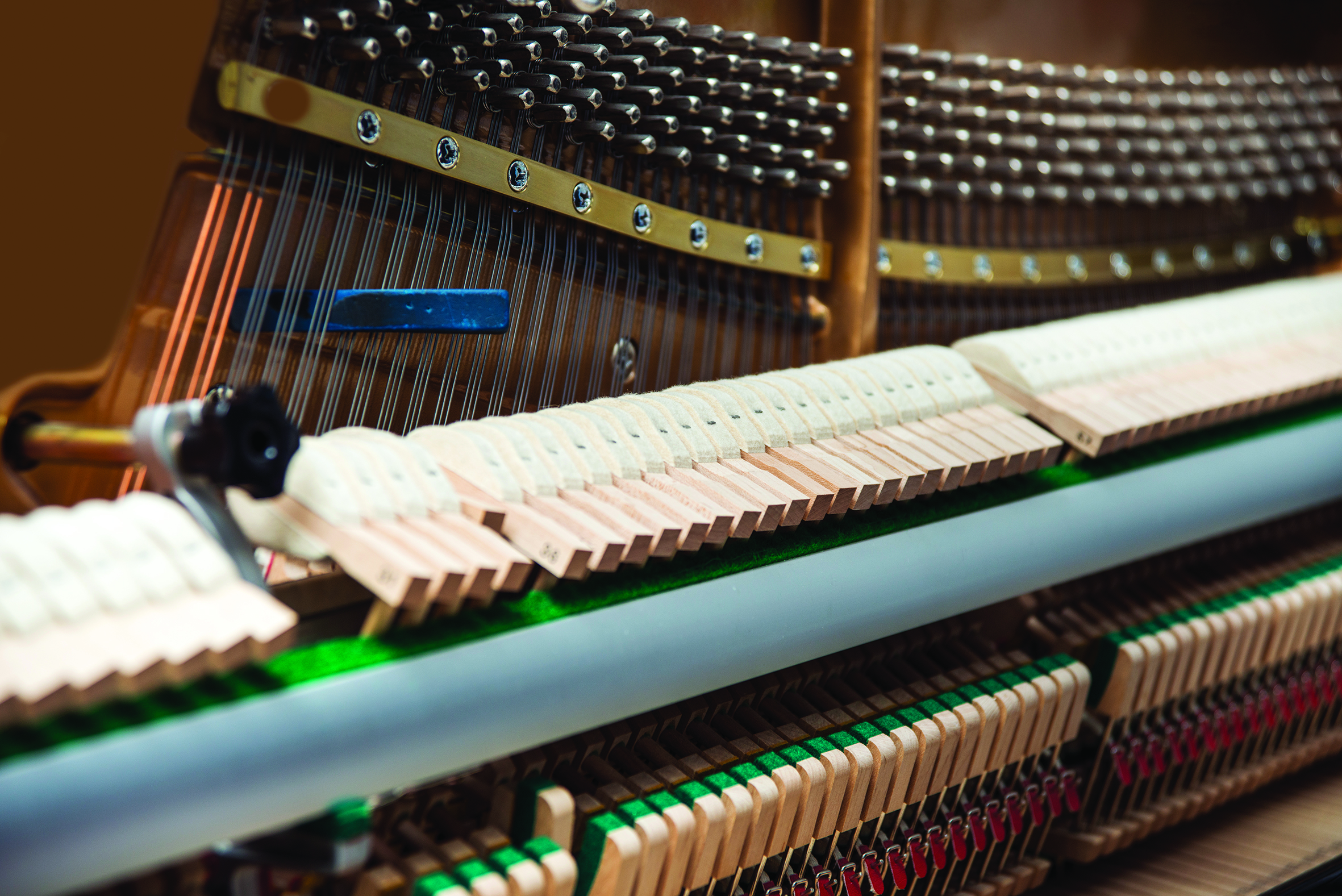How to choose the right piano sound for your track
All pianos are the same, right? Wrong. There’s a ton of variety in brands and models, and knowing this crucial bedrock of electronic music is a crucial starting point

Whether you’re working in the sample and plugin domain, or lucky enough to have an acoustic instrument to use, your perfect piano type is largely determined by your chosen genre of music or production. Here’s how to pick a piano…
Modern acoustic pianos largely fall into one of two categories; grand or upright. Without wishing to state the obvious, upright pianos are the ones that you might see against a wall, in an upright position, while grand pianos are the larger instruments, which take up a greater amount of floor space.
Apart from the form factor, there are other important differences between the two. Upright pianos tend to have smaller frames, which means that the strings are not as long. This translates to the lower pitched strings being shorter, meaning that uprights don’t sound so dominant at the lower end.
Being smaller in size, uprights can sound more intimate, or less resonant, but it does depend on the piano itself
Being smaller in size, uprights can sound more intimate, or less resonant, but it does depend on the piano itself. Most piano manufacturers will make uprights in different sizes, so it’s not entirely surprising that the larger the piano case, the bigger the frame, the fuller the sound of the instrument.
There have been some famous examples of tracks being recorded with more modest uprights, one of the most famous being a Challen upright piano, which was used by The Beatles. Originally located at Abbey Road in Studio 3, this smaller version of an upright provided an intimate sound, being considerably smaller than the often cited ‘Mrs Mills’ upright piano, also used by The Beatles, which remains at Abbey Road.
While you can also gain an intimate recording with a grand piano, the increase in size of instrument means that the larger frame can support longer strings. This means lower notes with greater resonant authority, although grand pianos also come in different sizes.
The best-regarded size of grand piano for recording purposes is between 6’6” and 7’.
Baby grands, as the names suggests, are relatively small in grand piano terms, and provide a less substantial sound as a consequence. Smaller grand pianos are designed for domestic use. Larger instruments, with a length of six feet plus, are described as concert grands, as they project far better in a performance environment, and are louder in volume as a consequence.
Want all the hottest music and gear news, reviews, deals, features and more, direct to your inbox? Sign up here.
Lifting the lid to an angle which is supported by the ‘stick’, will project the sound from the instrument, as it heads to an auditorium. Consequently, most homes don’t tend to play host to a concert-sized piano, as they are just too loud and big.
However, the best-regarded size of grand piano for recording purposes is between 6’6” and 7’. The Steinway Model B, Yamaha C6 and Bechstein B212 are all 6’11” (212cm) in size. The balance between upper-end clarity, and definition in the bottom end response, means that these instruments have become revered as the perfect size for a recording piano. You’ll find then in many studios.

Lurking underneath all pianos you’ll find some pedals. The norm tends to be for a minimum of two pedals; the right-hand pedal is sometimes inaccurately described as the loud pedal.
It’s actually the sustain pedal, so called because it lifts the dampers entirely from the strings, allowing them to sustain until the strings stop emitting a tone through vibration. It can have the effect of increasing the volume of the instrument, but only because of the overall sustain of so many notes, and not because the individual notes are louder.
Conversely, the left-hand pedal is described as the soft pedal, also known as the ‘una corda’ pedal. Depressing this pedal will create a softer tone, either by moving the hammers inside an upright piano closer to the strings, or in the case of a grand, nudging all the hammers along by a few millimetres, meaning that the hammers only hit ‘one string’. That is also the literal translation of ‘una corda’.
It’s always entirely possible to make a piano work for you. It’s just about understanding how
It’s relatively common to find a third, middle pedal on upright pianos, especially from brands such as Yamaha. Described as a practice pedal, the achieved tone is even quieter than that of the soft pedal, with a dampening in sound and timbre.
The method with which this is achieved varies from brand to brand, but many instruments introduce a layer of felt, between the hammers and the strings, creating a very beautiful felt piano effect. This has become something of an ubiquitous sound in cinematic and ambient circles, particularly with the application of lavish reverbs to the felted signal.
Pro and amateur pianists alike can be very fussy about their piano preferences. This is in part due to the action, playability and response of the instrument, alongside the overall sound. Brands such as Steinway, Bechstein, Bösendorfer and Fazioli all tend to be linked with classical or cinematic music, adopting a rich timbral construct which is perfect for those styles.
Meanwhile, Yamaha pianos have garnered a reputation for being brighter, and sometimes more suited to production settings. Yamaha’s tend to be very popular with pop, rock and jazz pianists, where the brighter tone works perfectly in a mix. But in our world of forensic, character-adjusting within our DAW, it’s always possible to make a piano work for you.


Computer Music magazine is the world’s best selling publication dedicated solely to making great music with your Mac or PC computer. Each issue it brings its lucky readers the best in cutting-edge tutorials, need-to-know, expert software reviews and even all the tools you actually need to make great music today, courtesy of our legendary CM Plugin Suite.
